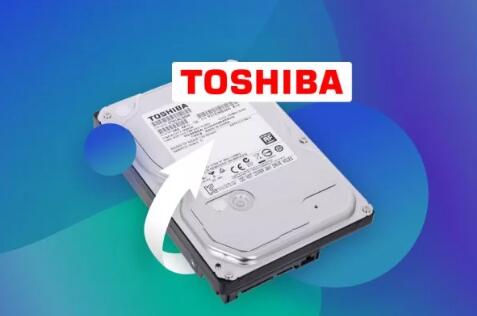If your Toshiba hard drive isn’t functioning properly, there are several steps you can take to diagnose and potentially resolve the issue.
1. Check Physical Connections
a. Inspect Cables and Ports:
USB Cable: Ensure the USB cable is securely connected to both the hard drive and the computer. Try using a different cable to rule out a faulty one.
USB Port: Connect the hard drive to a different USB port on your computer. If possible, test it on another computer to determine if the issue is with the drive or the original computer.

b. Power Supply:
For desktop external hard drives that require an external power source, ensure the power adapter is connected and functioning properly.
2. Verify Drive Recognition
a. Windows:
Device Manager: Press Win + X and select “Device Manager.” Expand the “Disk Drives” section to see if the drive is listed.
Disk Management: Press Win + X and select “Disk Management.” Check if the drive appears. If it’s unallocated or has no drive letter, you may need to assign one or initialize the disk.
b. macOS:
Disk Utility: Navigate to Applications > Utilities > Disk Utility. See if the drive is listed. If it’s present but not mounted, select the drive and click “Mount.”
3. Update or Reinstall Drivers
a. Update Drivers:
In Device Manager, right-click on the Toshiba hard drive under “Disk Drives” and select “Update driver.” Choose “Search automatically for updated driver software.”AOMEI Partition Assistant
b. Reinstall Drivers:
If updating doesn’t help, right-click on the drive and select “Uninstall device.” After uninstalling, disconnect and reconnect the drive to allow Windows to reinstall the driver automatically.
4. Run Disk Check Utility
a. CHKDSK Command (Windows):
Open Command Prompt as an administrator.Reddit
Type chkdsk X: /f (replace ‘X’ with the drive letter assigned to your Toshiba hard drive) and press Enter.AnyRecover+2Secure Data Recovery+2AnyRecover+2
This will scan and fix file system errors on the drive.
5. Change Drive Letter
If the drive is recognized but not accessible, changing its drive letter might help:AnyRecover
Open Disk Management.EaseUS+5iFixit+5AOMEI Partition Assistant+5
Right-click on the Toshiba drive and select “Change Drive Letter and Paths.”
Click “Change,” assign a new drive letter, and click “OK.”
6. Initialize the Disk
For new or uninitialized drives:
In Disk Management, right-click on the uninitialized Toshiba drive and select “Initialize Disk.”Secure Data Recovery
Choose the desired partition style (MBR or GPT) and click “OK.”Secure Data Recovery
7. Format the Drive
If the drive is accessible but not functioning correctly, formatting might resolve the issue. Note that this will erase all data on the drive:
In Disk Management, right-click on the Toshiba drive and select “Format.”
Choose the file system (e.g., NTFS for Windows) and perform a quick format.
8. Use Safe Mode
Booting into Safe Mode can help determine if background processes are interfering:EaseUS
Restart your computer and press F8 (or the appropriate key for your system) before Windows loads.
Select “Safe Mode” and see if the Toshiba drive is recognized.
9. Check for Malware
Malware can interfere with drive recognition:iFixit
Run a full system scan using your antivirus software to detect and remove any threats.
10. Seek Professional Help
If none of the above steps work, the drive might have hardware issues. Consider contacting Toshiba support or a professional data recovery service.
About us and this blog
Panda Assistant is built on the latest data recovery algorithms, ensuring that no file is too damaged, too lost, or too corrupted to be recovered.
Request a free quote
We believe that data recovery shouldn’t be a daunting task. That’s why we’ve designed Panda Assistant to be as easy to use as it is powerful. With a few clicks, you can initiate a scan, preview recoverable files, and restore your data all within a matter of minutes.

 Try lt Free
Try lt Free Recovery success rate of up to
Recovery success rate of up to









